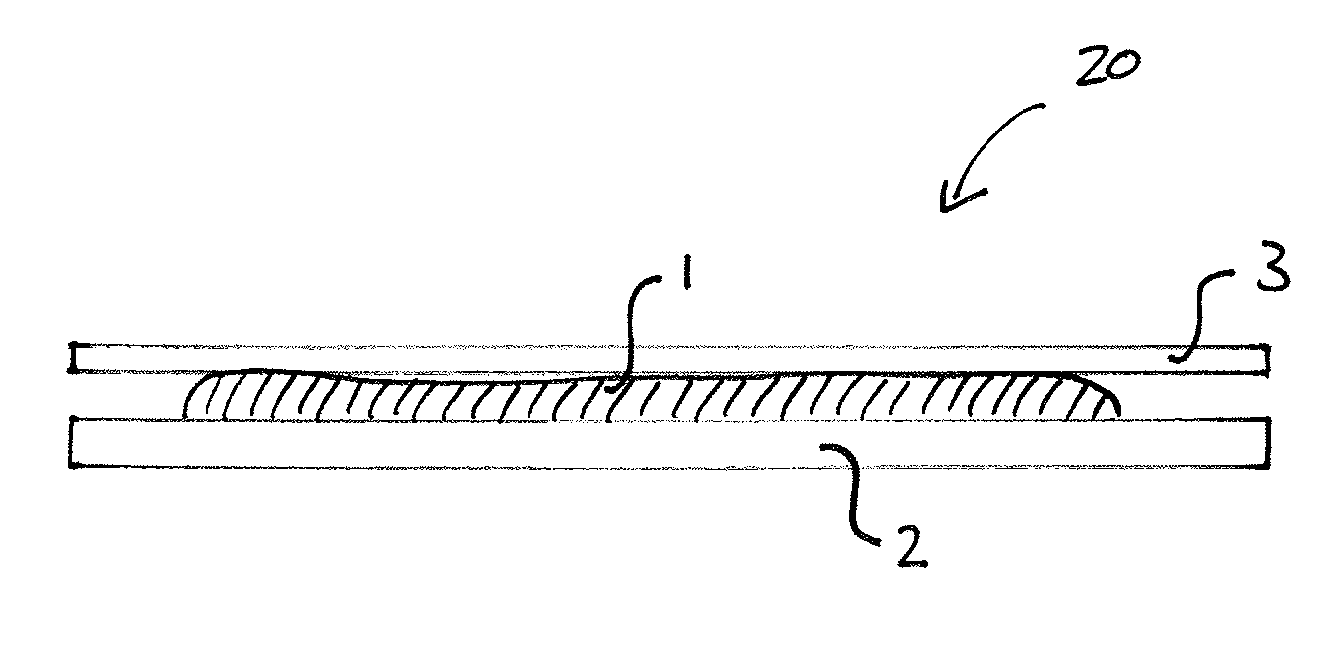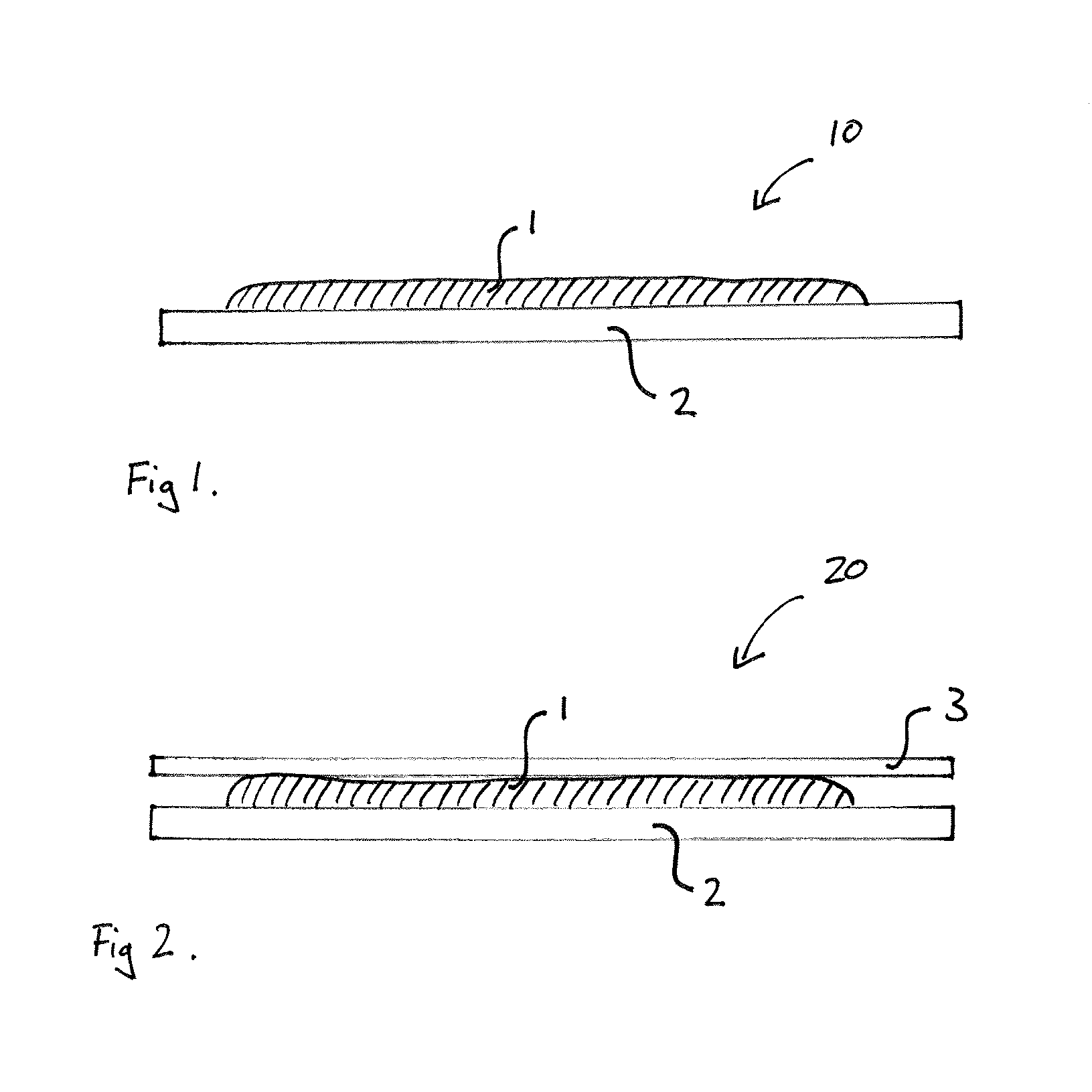Adhesion promoting compound
a technology of adhesion and compound, applied in the field of adhesion promoting compound, can solve the problems of reducing lamination performance, compromising other ink performance properties, reducing lamination performance, etc., and achieve the effect of reducing the chance of adhesion failure and reducing customer rejection ra
- Summary
- Abstract
- Description
- Claims
- Application Information
AI Technical Summary
Benefits of technology
Problems solved by technology
Method used
Image
Examples
examples
[0069]The following examples illustrate specific aspects of the present invention and are not intended to limit the scope thereof in any respect and should not be so construed.
[0070]Descriptions of Components[0071]RJCE is titanium IV isopropoxide (Vertec RJCE)[0072]Flex-Rez 1084AS is a polyamide resin with an acid number of ≦15 mgKOH / g and an amine number of ≦15 mgKOH / g[0073]Uni-Rez 138 is a polyamide resin with an acid number of 1.6 mgKOH / g and an amine number of 2.1 mgKOH / g[0074]Casamid 874 is a polyamide resin with an acid number of ≦6 mgKOH / g and an amine number of ≦6 mgKOH / g[0075]Surkopak 5246 and Surkopak 5323 are a thermoplastic polyurethane resins supplied by BIP (Oldbury) Ltd[0076]PU3552 is an elastomeric polyurethane resin supplied by Arakawa[0077]Neorez U-395 is an elastomeric polyurethane resin supplied by DSM Neoresins[0078]ATBC is a citrate plasticizer supplied by Univar Ltd[0079]TSDA is an ethanol solvent supplied by Brenntag[0080]Polyrub FA09 in IPA is a polyethylene...
PUM
| Property | Measurement | Unit |
|---|---|---|
| wt % | aaaaa | aaaaa |
| acid value | aaaaa | aaaaa |
| surface tension | aaaaa | aaaaa |
Abstract
Description
Claims
Application Information
 Login to View More
Login to View More - R&D
- Intellectual Property
- Life Sciences
- Materials
- Tech Scout
- Unparalleled Data Quality
- Higher Quality Content
- 60% Fewer Hallucinations
Browse by: Latest US Patents, China's latest patents, Technical Efficacy Thesaurus, Application Domain, Technology Topic, Popular Technical Reports.
© 2025 PatSnap. All rights reserved.Legal|Privacy policy|Modern Slavery Act Transparency Statement|Sitemap|About US| Contact US: help@patsnap.com


